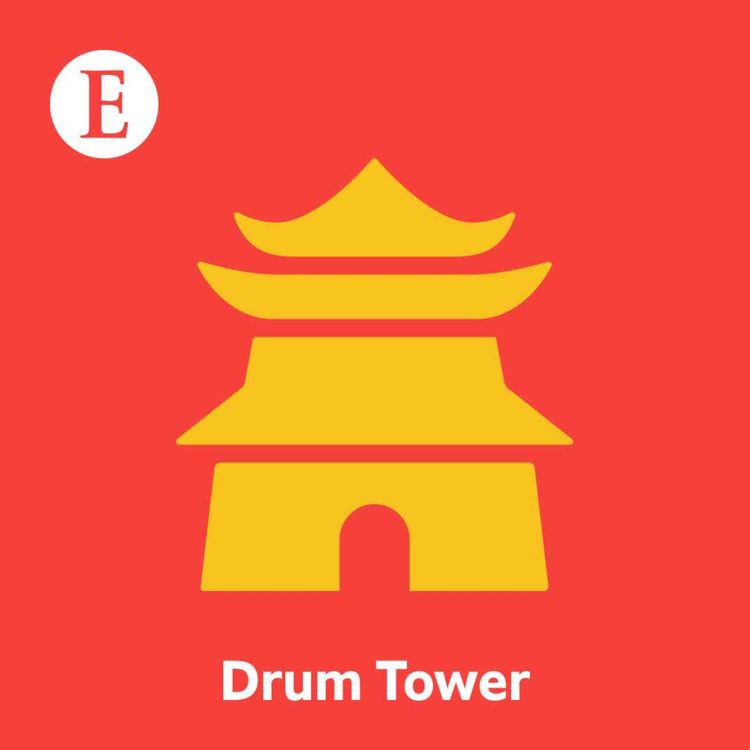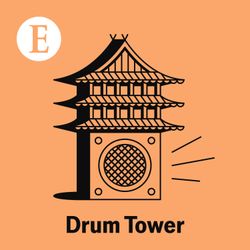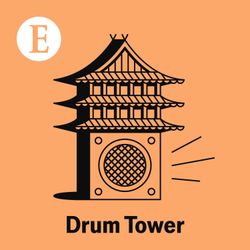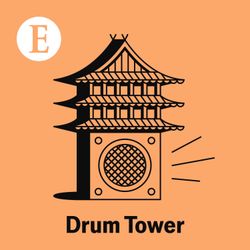Share

Drum Tower
Drum Tower: Islands in the Strait
•
Kinmen is caught in the middle. The tiny island is 187km from Taiwan, which administers it, but only 3km away from China, which does not. If a conflict were to break out between China and America, Taiwan would be the front line. And if a confrontation began between China and Taiwan, Kinmen would play that role.
The Economist’s Beijing bureau chief, David Rennie, and senior China correspondent, Alice Su, hear from Kinmenese locals about their history, their identity and their future.
Sign up to our weekly newsletter here and for full access to print, digital and audio editions, as well as exclusive live events, subscribe to The Economist at economist.com/drumoffer.
More episodes
View all episodes

Life of the party: what does it mean to be a CCP member?
27:27|China’s Communist Party boasts more than 99 million members. But quantity doesn’t mean quality—and Xi Jinping has been trying to root out weak members.Jiehao Chen, The Economist’s China researcher and Drum Tower producer, and Gabriel Crossley, our China correspondent in Beijing, examine what it means to belong to the CCP in today’s China—and how that is changing. Plus, what do America’s China hawks get wrong about the party’s members?Transcripts of our podcasts are available via economist.com/podcasts.Listen to what matters most, from global politics and business to science and technology—subscribe to Economist Podcasts+. For more information about how to access Economist Podcasts+, please visit our FAQs page or watch our video explaining how to link your account.
Teen troubles: China’s disciplinary centres for “deviant” youth
29:51|Hefei is an inland city only a few hours by train from Shanghai. But while teenagers in the coastal megacity attend voguing parties and young men wear makeup to work, growing up in conservative Hefei is different.Failing to conform to your parents’ expectations of what it means to be a good child can lead to trouble. In Zhang Enxu’s case, that meant years of beatings and, when those didn’t work, being sent to a disciplinary centre to be “fixed”. These private, often expensive, centres are a final resort for parents. Their admission criteria are wide: anything from performing poorly at school to having a different sexual orientation. And life on the inside can be brutal. Alice Su, The Economist’s senior China correspondent, and Don Weinland, our China business and finance editor, meet Zhang and find out what happens when young Chinese challenge the social conservatism of their parents.Transcripts of our podcasts are available via economist.com/podcasts.Listen to what matters most, from global politics and business to science and technology—subscribe to Economist Podcasts+. For more information about how to access Economist Podcasts+, please visit our FAQs page or watch our video explaining how to link your account.
Climate change: could China lead the world’s fight?
28:47|LONGi is one of the world’s biggest solar manufacturers. At its headquarters in Shaanxi province, robots turn slices of silicon into solar cells around the clock. Companies like LONGi have helped China become a clean-energy powerhouse. The solar panels and lithium-ion batteries the country produces are crucial for greening the world’s economies. But China is also the world’s biggest emitter of carbon dioxide. Shaanxi province is home to a thriving coal industry. And China’s love affair with the stuff is far from over: last year, on average, two new coal-fired power plants were approved every week. The country has work to do if it’s to hit Xi Jinping’s target of being carbon-neutral by 2060. In the final days of the COP29 conference, Alice Su, The Economist’s senior China correspondent, and Gabriel Crossley, our correspondent based in Beijing, examine China’s climate policy and ask: what’s stopping the country from leading the world’s fight against climate change?For more on COP29, check out the latest episodes of our sister podcasts: “Babbage” looks at how to wean countries off coal, while “Money Talks” counts the cost of the energy transition.Transcripts of our podcasts are available via economist.com/podcasts.Listen to what matters most, from global politics and business to science and technology—subscribe to Economist Podcasts+. For more information about how to access Economist Podcasts+, please visit our FAQs page or watch our video explaining how to link your account.
Trump’s return: the dangers and opportunities for China
41:34|For evidence that America is a corrupt and broken country run by billionaires, look no further than the re-election of Donald Trump—at least that’s how Chinese propagandists are spinning it. In their hands, Mr Trump’s victory is proof of their superpower rival’s decline. But what will be the real-world consequences of Mr Trump’s return to power? The 60% tariffs he’s threatened would be a serious challenge for China’s economy. And a confrontation over Taiwan would be disastrous for the world. When it comes to China, will Mr Trump listen to the superhawks in his next administration? Or could he strike a deal with China? David Rennie, The Economist’s geopolitics editor, and Alice Su, our senior China correspondent, ask what Mr Trump’s return to the White House will mean for the country.For more coverage of the US election, check out our sister podcasts “Checks and Balance” and “Money Talks”.Transcripts of our podcasts are available via economist.com/podcasts.Listen to what matters most, from global politics and business to science and technology—subscribe to Economist Podcasts+. For more information about how to access Economist Podcasts+, please visit our FAQs page or watch our video explaining how to link your account.
A rock in a hard place: a trip to the South China Sea
50:59|Planning a holiday? How about a 32-hour boat ride through the South China Sea, one of the world’s most contested waterways? Six governments have laid claim to the Spratly Islands, including China. The country has been intimidating its rivals in the region and the Philippines is its primary target.Pag-asa is ground zero in this fight. It’s the only one of the islands with a civilian population. There aren’t any hotels or fancy restaurants. Instead, a handful of hardy Filipinos eke out a living, and plenty of fishermen experience Chinese bullying every day. Sue-Lin Wong, The Economist’s South-East Asia correspondent, joins a tourist trip like no other, in an episode that first aired on The Weekend Intelligence podcast.Transcripts of our podcasts are available via economist.com/podcasts.Listen to what matters most, from global politics and business to science and technology—subscribe to Economist Podcasts+. For more information about how to access Economist Podcasts+, please visit our FAQs page or watch our video explaining how to link your account.
Climbers (part four): The American dream
44:09|The Chinese and American dreams both extol working hard to achieve success. But in recent years, for many Chinese, attaining that dream has felt out of reach.Some have decided to pursue the American one instead. They embark on the zouxian journey, which takes them from South America to the US through some of the most difficult and dangerous terrain in the world. Drum Tower has been following Chinese migrants on this path from Necoclí, on Colombia’s Caribbean coast, to Tapachula in southern Mexico, to Jacumba Hot Springs in southern California. The migrants have trudged over mountains, forded rivers and been robbed and extorted by gangs and cartels. But none of them have given up hope of making it to America.This week we go to Monterey Park, California, where the new arrivals try to build their lives. They come to Fatty Ding Plaza, a nondescript shopping mall, to find informal work, a place to live and to connect with other migrants. In the final episode of our four-part series, Alice Su, The Economist’s senior China correspondent, catches up with the migrants she met along the way. As they begin the next chapter in their quest for the American dream, she asks, was it worth it?Transcripts of our podcasts are available via economist.com/podcasts.Listen to what matters most, from global politics and business to science and technology—subscribe to Economist Podcasts+. For more information about how to access Economist Podcasts+, please visit our FAQs page or watch our video explaining how to link your account.
Climbers (part three): The wall
41:10|Jacumba Hot Springs is a speck on the map of southern California. Cacti and desert sage bake beneath the sun and the border wall looms on the horizon.Migrants trying to enter America scramble over or under it. But close to Jacumba, there’s a tiny spot where the wall peters out. People simply walk around it. Any relief at having crossed the border is short-lived. Chinese migrants on their zouxian journey need to turn themselves into the US Border Patrol, and fast. If they don’t, they will be denied the right to seek asylum. Still, those who do seek asylum may spend the first few months of their American dream in detention. In the third episode of a four-part series, Alice Su, The Economist’s senior China correspondent, heads to Jacumba and meets Chinese migrants who’ve just found their way around the wall, and arrived in America. Are they really drawn to the country’s ideals of freedom and democracy? Or are the migrants exploiting a broken border and asylum system? And do the Chinese migrants we’ve been following, who’ve made it this far, turn themselves in? Transcripts of our podcasts are available via economist.com/podcasts.Listen to what matters most, from global politics and business to science and technology—subscribe to Economist Podcasts+. For more information about how to access Economist Podcasts+, please visit our FAQs page or watch our video explaining how to link your account.
Climbers (part two): Snakeheads and ladders
37:19|They’ve trudged over mountains, forded rivers in wooden canoes, then ridden buses the length of central America. For Chinese migrants on their zouxian journey, Mexico is the only thing separating them from their American dream.Tapachula, in the country’s south, is their first port of call. This small city, just across the border from Guatemala, has become a hub for migrants on their journey north. But making it to Mexico’s northern border isn’t easy. Governments across the region are doing what they can to deter migrants from making it to the US. And that’s pushing migrants into the hands of criminal groups who rob and extort them. In the second episode of a four-part series, Alice Su, The Economist’s senior China correspondent, travels to Tapachula and sees the human cost of this game of snakes and ladders. How will the migrants she’s met survive the maze that is Mexico?Transcripts of our podcasts are available via economist.com/podcasts.Listen to what matters most, from global politics and business to science and technology—subscribe to Economist Podcasts+. For more information about how to access Economist Podcasts+, please visit our FAQs page or watch our video explaining how to link your account.
Climbers (part one): A way out of China
42:27|Necoclí is a tiny town on Colombia’s Caribbean coast. Beach bars blast party music and sell brightly-coloured cocktails. But Necoclí is not just a tourist destination. It is also a stopping point for migrants heading to the United States.The fastest-growing group among them are Chinese. They are on a journey they call zouxian, or walking the line. Disillusioned with the Chinese dream, they have decided to chase the American version. But first they face a journey that is fraught with peril. Necoclí is the place migrants stock up on supplies and cash, before putting their trust in smugglers who will guide them across the Darién Gap, a treacherous stretch of jungle separating Colombia and Panama.In the first episode of this four-part series, Alice Su, The Economist’s senior China correspondent, travels to Necoclí to meet Chinese migrants on their zouxian journey, and asks what drove them to leave China and take such risks.Transcripts of our podcasts are available via economist.com/podcasts.Listen to what matters most, from global politics and business to science and technology—subscribe to Economist Podcasts+. For more information about how to access Economist Podcasts+, please visit our FAQs page or watch our video explaining how to link your account.